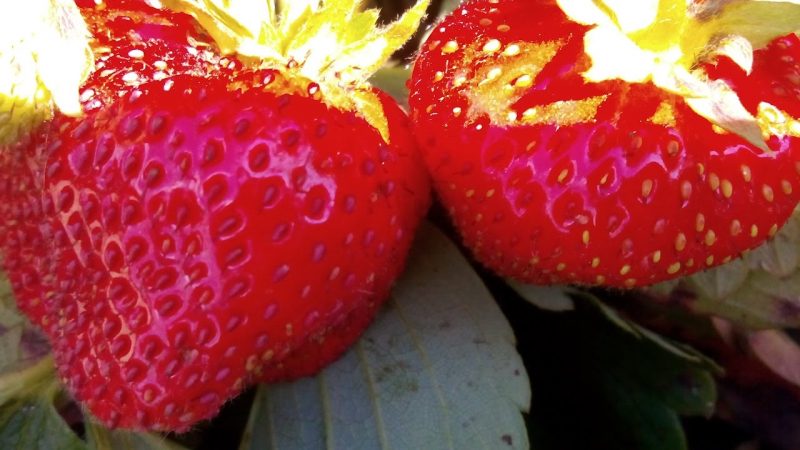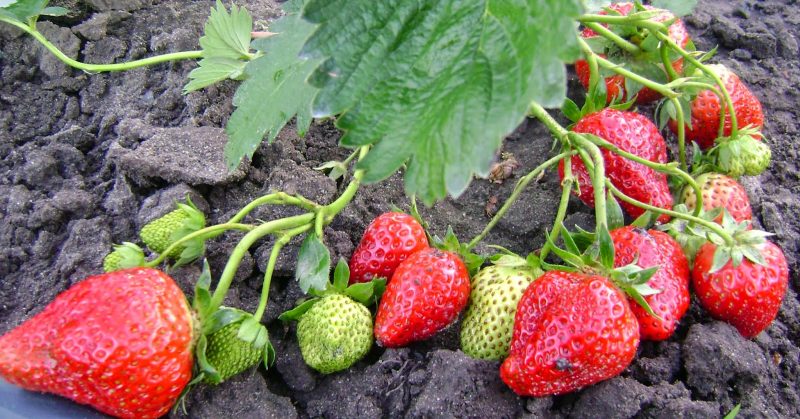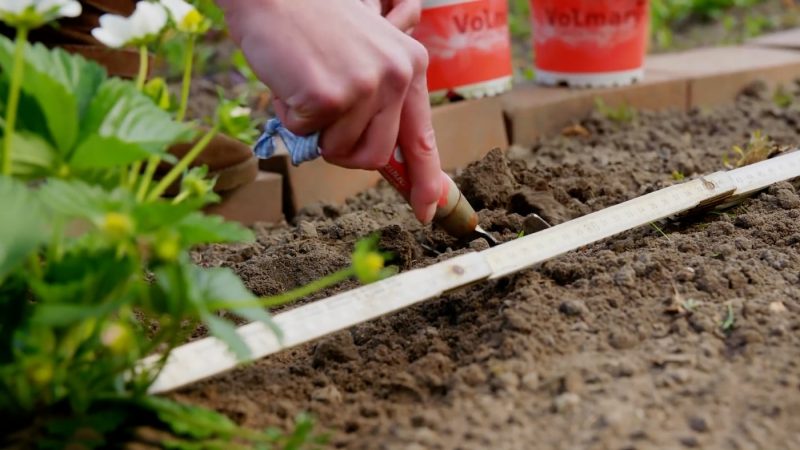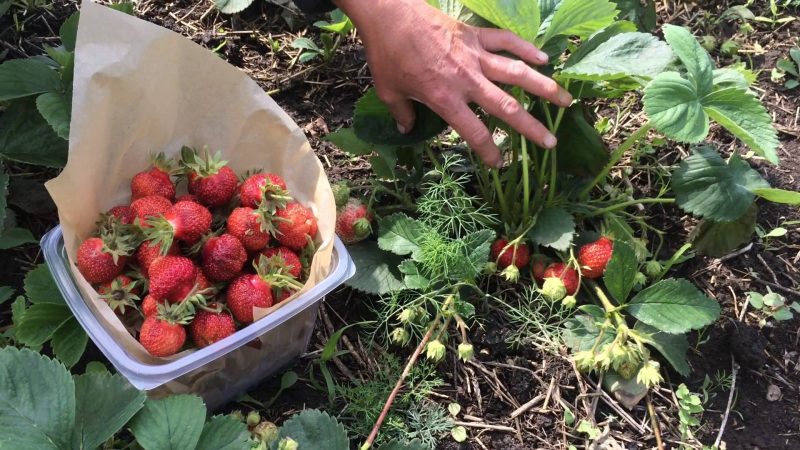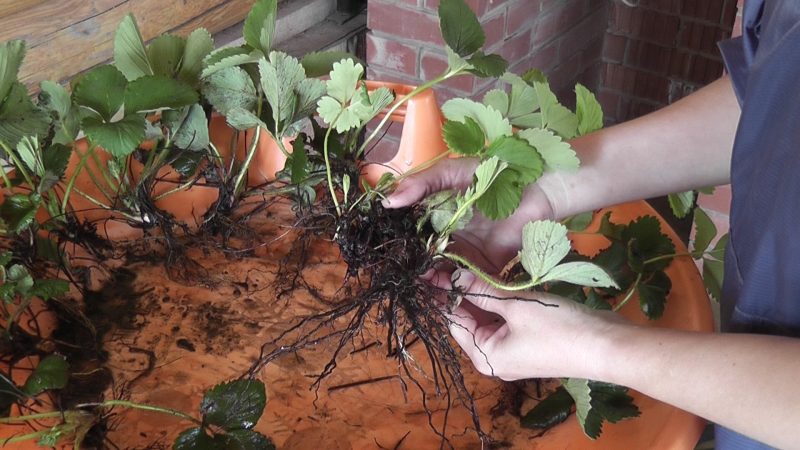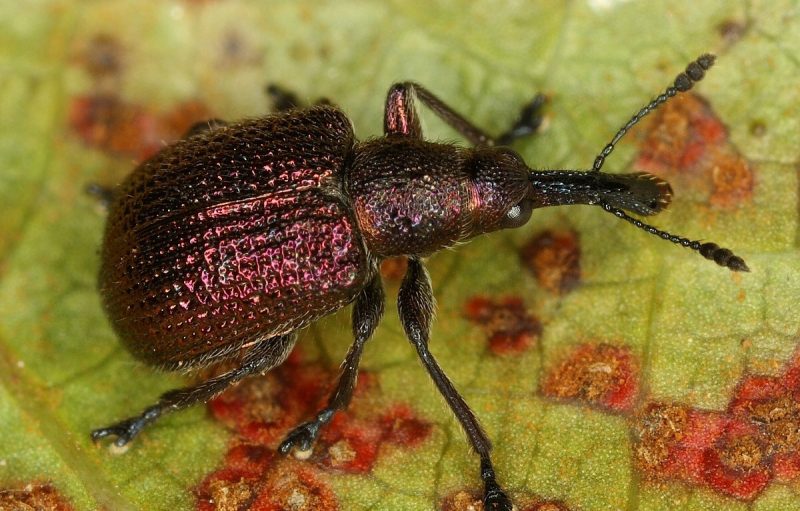Growing strawberries is an interesting and thankful thing if you plant a good berry. Bred by Russian breeders, the Tsaritsa variety - strawberries with excellent taste and large fruits, will occupy a worthy place in the summer cottage.
Material Content:
Grade description
The queen has beautiful crimson berries of large or medium size. The bushes are compact, well leafy, dark green. This high-yielding variety is the pride of the Bryansk breeder Svetlana Aitjanova. For its breeding, Red Gontlent and Venta varieties were used.
The Queen's berries have a good presentation, brightly colored red pulp of medium density, pronounced aroma.
The taste of strawberries is sweet and sour, juicy. Weight 1 pc. 40-50 grams. The variety is resistant to fungal diseases, can withstand frosts down to minus 30 ° C without shelter.
Advantages and disadvantages
To assess all the advantages of the variety will help seedlings purchased in the nursery. There is no doubt that such seedlings were grown in compliance with all agrotechnical rules and comply with the stated characteristics.
Expected Benefits:
- pleasant taste and aroma of pulp;
- dense berry structure, good transportability;
- beautiful presentation of fruits;
- resistance to frost and disease.
Strawberry variety Queen of medium maturity. Berries are good in freezing, suitable for making compotes, jams, preserves.
Disadvantages:
- growing for sale may not meet expectations in adverse weather conditions;
- with a little snow in the winter, the bushes may freeze.
It is important to acquire healthy seedlings with a closed root system and leaves in an amount of at least 4 pieces.
Outdoor landing
For strawberries, choose a well-lit place in the garden.The sweetness of the berry and its productivity will depend on the abundance of the sun. A plot with fertile soil, protected from the cold wind, is suitable.
Straw seedlings are planted in open ground in spring (April, May), at the end of summer (August), or in autumn (September). The soil is pre-prepared by removing weeds. Add per 1 sq. m. beds drainage in the form of coarse sand (1/2 bucket), and for fertilizer - rotted manure (2 buckets), wood ash (1 tbsp. l) and urea (2 tbsp. l).
Planting strawberries in open ground:
- Dig holes to the size of the root system.
- The distance between the holes is 20-25 cm, between the rows - 40 cm.
- When planting, straighten the roots of seedlings, sprinkle with earth.
- Strawberries are watered using at least 2 liters of water for each bush.
- Mulch the ground with sawdust or straw (if planted on agrofiber, skip this step).
Care must be taken to ensure that the central growth point of the seedlings is at the level of the soil.
Growing and caring strawberries Queen
For a good harvest, strawberries need proper care - regular watering, top dressing, weeding. Growing on agrofibre reduces labor costs for weed removal and frequent watering, but requires the installation of a drip irrigation system.
The beds without agrofibre are mulched with straw. In dry weather, watered every three days. When the crop is ripening, water should not fall on the leaves and fruits.
The lack of nutrients in the soil makes the berries small and less sweet, so fertilizing is done throughout the growing season:
- in the spring, when the snow melts, fertilize with urea;
- before flowering, infusion of mullein or bird droppings is used as a top dressing;
- after fruiting, when the plants are prepared for winter, potassium sulfate and superphosphate are added;
- at the end of September, rotted compost, humus or manure are scattered on strawberry beds.
After harvesting, leaves and mustaches are trimmed, stems no longer than 10 cm are left. Whiskers cut everything, rooting large rosettes in separate pots so that strawberries can prepare for the onset of cold weather. After trimming, top dressing and watering are carried out. Such care will help to get a good harvest for the next year.
In order not to depend on the vagaries of nature, in November, beds with strawberries can be covered with straw and lapnik. Then even in a cold, snowless winter, not a single plant will suffer. Corn shelters, fallen leaves or non-woven covering material are also suitable as shelters.
Breeding methods
Propagation of varietal strawberries by self-collected seeds does not give good results. Seedlings do not inherit the signs of the mother plant, the berries are small and sour.
To obtain seedlings, use the vegetative method of propagation with a mustache - overhead shoots forming daughter sockets.
There are two ways to get healthy young plants:
- Choose bushes with the largest berries, leaving them with 2-3 mustaches. For seedlings, only first-order sockets are taken, the rest are cut off. Root them in pots for seedlings, not separating from the mother plant.
- After fruiting, all mustaches are cut and rosettes with root buds are rooted in cassettes filled with peat soil.
Strawberries can also be propagated by dividing the bush. To do this, dig healthy sprawling bushes in September or April and divide them into 2-3 parts, planting in different holes. Each seedling should have well-developed roots and several healthy leaves.
Diseases and Pests
Strawberry garden Queen is appreciated by gardeners for strong immunity. It is much less likely to be affected by powdery mildew and other fungal diseases than some other varieties. But preventive treatment with fungicides in early spring cannot be ruled out.
When the snow melts, strawberry beds are cleaned of dried, diseased leaves and sprayed with Fitosporin.
From the twisted young leaves of olive-yellow color, you can guess that a tick settled on the strawberry.It is difficult to consider it due to its microscopic size. From this scourge boiling water with a temperature of 50-60 ° C helps. Hot water is watered with watering plants.
Strawberry-raspberry weevil who settled on strawberries can leave without a crop. The female of this beetle lays eggs in flower buds, and the hatched larvae eat flowers. To combat weevil, the Fitoverm insecticide is used, insects are collected manually. After harvesting, you can process the beds with Actellic or Karbofos.
Subject to all the rules of care, every gardener will be able to enjoy an excellent strawberry crop.


